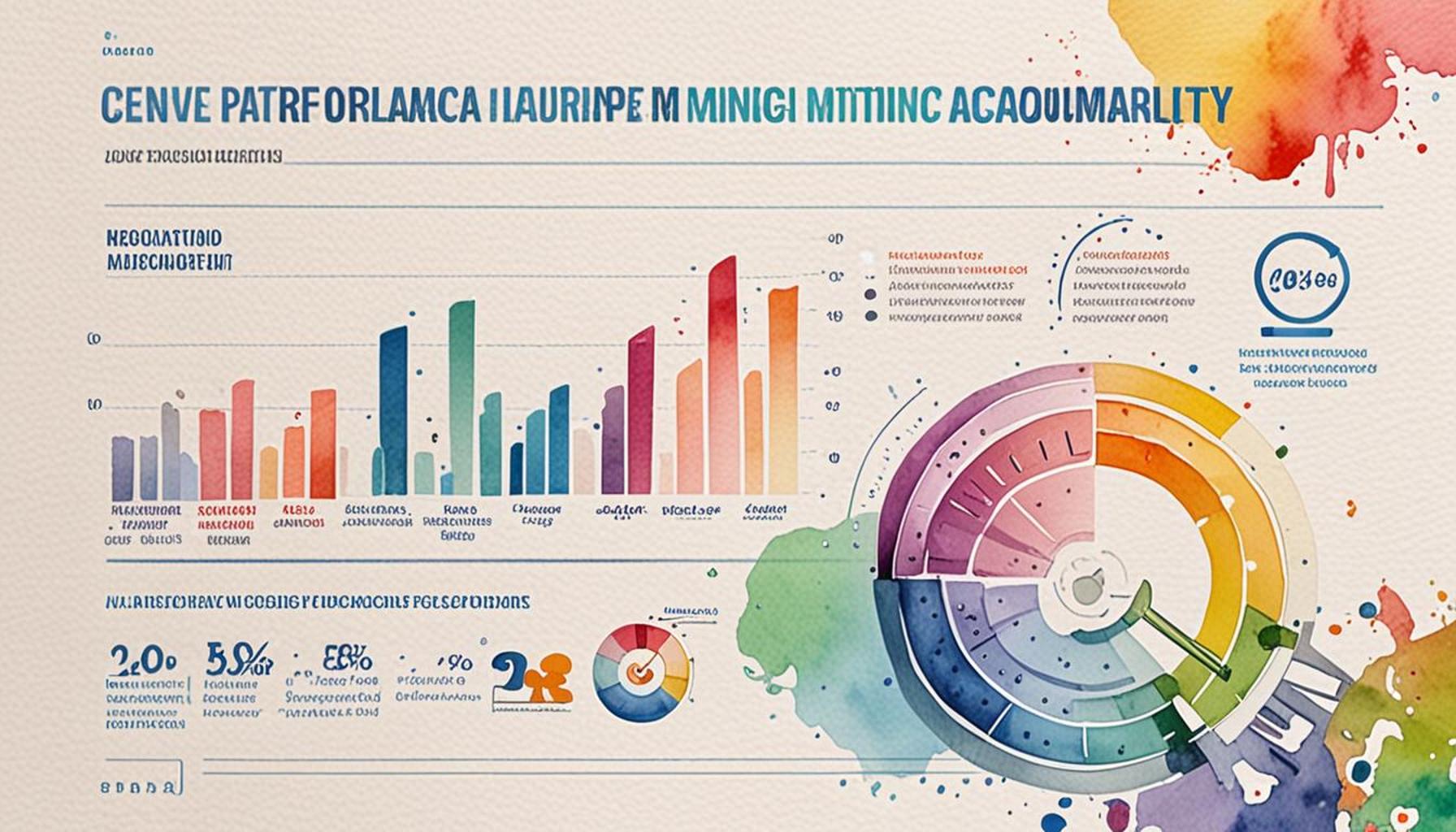The impact of online advertising on awareness campaigns about government benefits

Understanding the Digital Age’s Influence on Government Benefits Awareness
The surge of the digital era has transformed the landscape of communication, fundamentally altering how information spreads. In the realm of government benefits, which offer essential support to millions of Americans, the role of online advertising emerges as a pivotal component in bridging the awareness gap. Many citizens remain unaware of the resources available to them, resulting in a stark underutilization of these vital programs.
The impact of online advertising on public awareness campaigns is undeniable and multifaceted. By leveraging the unique capabilities of digital platforms, agencies can:
- Conduct direct outreach to specific demographics, tailoring messages that resonate with diverse groups based on age, location, or socioeconomic status.
- Implement cost-effective marketing strategies that provide a higher return on investment compared to traditional media, such as billboards and print advertisements.
- Utilize real-time feedback and analytics to assess engagement levels, allowing for the optimization of campaigns to ensure they effectively reach and resonate with their intended audience.
Government assistance programs, encompassing essential services like healthcare, food assistance, and housing support, are designed to enhance the quality of life for individuals facing financial challenges. However, a pressing question remains: what strategies can be employed to ensure that these resources are not only available but also known to those who need them most?
Historically, awareness efforts depended heavily on print advertising and local community events to spread the word about these programs. Yet, the transition to digital platforms has opened exciting avenues for outreach. For example:
- Social media platforms, including Facebook and Instagram, serve as powerful tools to engage younger populations, who might be less familiar with government resources but are already active online.
- Search engine advertisements target specific queries, such as “how to apply for food stamps” or “local housing assistance programs,” placing relevant information directly in front of users when they are actively seeking help.
- Email marketing campaigns can be designed to reach eligible individuals based on data from government lists, ensuring that those who qualify for assistance are informed about their options.
By embracing these digital strategies, government agencies can substantially increase the visibility of benefits programs. This not only empowers citizens to take action and access the resources they need but also fosters a more informed and supported community. In an era marked by rapid technological advancement, tapping into the power of online advertising is not just beneficial; it is essential for connecting citizens with the help they deserve.
RECOMMENDED: Check out this similar article
Harnessing Digital Strategies for Enhanced Outreach
As the digital landscape continues to evolve, online advertising has become a cornerstone for advancing awareness of government benefits. The traditional mechanisms of communication, while still valuable, are often eclipsed by the immediacy and reach of digital channels. With over 90% of Americans online, the opportunity to connect with a diverse audience is at an unprecedented high. The question, however, is how best to translate this digital presence into impactful awareness campaigns that effectively inform and engage citizens regarding the benefits available to them.
One notable advantage of online advertising is its ability to deliver highly targeted messages. Unlike traditional media, which casts a wide net, digital platforms allow agencies to narrowly tailor campaigns to specific populations. For example:
- Demographic Targeting: By utilizing data analytics, advertising campaigns can reach individuals based on age, income level, or geographic area. This ensures messages about programs such as Supplemental Nutrition Assistance Program (SNAP) or Medicaid are seen by those who stand to benefit the most.
- Behavioral Insights: Campaigns can be designed to highlight resources to specific behaviors, such as targeting users who frequently search for financial assistance or support services online.
- Customized Content: Visual and textual elements of advertisements can be adapted to resonate more deeply with individual communities, whether urban neighborhoods or rural areas, thus improving overall message effectiveness.
Furthermore, the cost-efficiency of online advertising cannot be overlooked. Government agencies, often constrained by budget limitations, find that digital strategies can yield a higher return on investment compared to traditional outreach methods. For instance:
- Pay-per-click (PPC) campaigns: These campaigns allow agencies to pay only for actual engagement, meaning they can maximize outreach without incurring significant upfront costs.
- Longer lifespan and adaptability: Online ads can easily be modified and re-targeted based on performance metrics, allowing for continuous improvement of messaging and outreach strategies.
- Integration with mobile technology: Given that mobile devices account for over 50% of web traffic in the U.S., utilizing mobile-responsive ads enables reaching individuals on-the-go, allowing for immediate access to resources.
However, awareness is only the first step. The challenge lies in ensuring that this information translates into action. For many potential beneficiaries, barriers to access may still exist. Compounding these challenges are factors such as misinformation, stigma surrounding the use of government programs, and the complex nature of applications. As a result, a comprehensive digital strategy must not only outline available benefits but also demystify the process involved in accessing them.
As government agencies embrace the impact of online advertising, it is vital that they continue to innovate digital outreach methods and address the barriers that hinder equitable access. By doing so, they can foster a more informed and engaged citizenry, ultimately enhancing the effectiveness of government assistance programs across the nation.
The Role of Targeted Ads in Awareness Campaigns
Online advertising has revolutionized how awareness campaigns regarding government benefits reach the public. With targeted ads, campaign managers can focus their messaging based on demographic data, user behavior, and specific interests. This method increases the relevance of the ads and significantly enhances the chances of engagement. For example, platforms like Facebook and Google allow advertisers to segment their audiences to tailor messages about benefits such as financial aid, healthcare, and educational grants to the specific needs of the respective groups.
Measuring Impact Through Data Analytics
Analytics tools provide valuable insights into how effectively these campaigns convert views into actions. By monitoring engagement rates, click-through rates, and conversion metrics, government bodies can fine-tune their strategies for better performance. An example of this can be seen in the use of A/B testing, where different versions of an ad are displayed to gauge which performs better, ultimately delivering the most impactful information to potential beneficiaries.
| Category | Description |
|---|---|
| Target Audience Relevance | Ensures messages resonate with specific demographic and geographical segments. |
| Increased Engagement | Higher likelihood of user interaction due to personalized content based on user data. |
| Efficient Budget Utilization | Targeted campaigns reduce wasteful spending while maximizing outreach. |
| Real-time Feedback | Allows for quick adjustments based on performance metrics, leading to optimized results. |
The advantages of integrating online advertising with awareness campaigns cannot be overstated. Through targeted messaging and real-time analytics, these campaigns increase overall public knowledge of government benefits, enabling more individuals to take full advantage of services available to them.
CHECK OUT: Click here to explore more
Building Trust Through Effective Communication
While targeted online advertising offers significant opportunities for outreach, the essence of successful awareness campaigns about government benefits hinges on building trust with the audience. Trust is crucial, especially when dealing with sensitive subjects like financial assistance programs. The pervasive nature of misinformation on social media can lead to skepticism regarding the authenticity of government messages. Thus, it becomes necessary for agencies to adopt strategies that not only disseminate information but also foster credibility.
One effective strategy is the integration of trusted community voices into advertising campaigns. Engaging local leaders, advocates, or influencers who resonate with target demographics can significantly enhance the perceived authenticity of the messages. For example, when campaigns about the Affordable Care Act (ACA) feature local healthcare providers or community activists discussing the benefits, potential beneficiaries are more likely to feel a connection and trust the presented information.
Moreover, transparency plays a pivotal role in enhancing trust. Awareness campaigns should clearly outline the eligibility requirements for government programs, as well as the application processes. Offering step-by-step guides through other digital channels, such as websites and social media, can demystify the application process and encourage individuals to take action. Utilizing multimedia formats such as videos or live FAQ sessions can also demystify applications for programs like unemployment benefits, making it easier for users to understand their options.
Furthermore, leveraging email marketing as a component of online advertising can help maintain an ongoing dialogue with the audience. By creating subscription lists based on interest levels or demographics, agencies can deliver tailored content that directly addresses user questions or concerns. This not only reinforces trust but also keeps beneficiaries engaged with timely updates about relevant benefit programs. Analytics can also guide the frequency and timing of these communications, optimizing engagement rates.
The power of social media platforms should not be underestimated. Utilizing platforms such as Facebook, Instagram, or TikTok, government agencies can harness their viral potential to spread awareness rapidly. Creative content that incorporates storytelling elements can resonate with potential beneficiaries on a personal level. For instance, testimonials from individuals who have successfully navigated the benefits landscape can serve as inspirational stories, encouraging others to seek assistance.
Additionally, adapting content for accessibility is paramount. In a country where linguistic diversity is prevalent, campaigns using various languages can significantly enhance outreach. Providing materials in Spanish, Mandarin, or other widely spoken languages ensures that non-English speakers are not left behind, fostering inclusivity in awareness efforts. Furthermore, ensuring that online resources are user-friendly and compliant with accessibility standards maximizes reach across demographic segments.
Finally, continuous monitoring and evaluation of campaign performance will enhance the effectiveness of online advertising strategies. Utilizing analytics to track user engagement, click-through rates, and conversion rates allows agencies to adjust campaigns in real time, optimizing outreach efforts based on real-world data. Moreover, gaining feedback from the community can offer insights into how programs are perceived and alert agencies to any misinformation or misconceptions that might exist.
In essence, while online advertising undoubtedly provides the necessary tools to enhance awareness of government benefits, the focus on building trust, community engagement, and ensuring accessibility must not be overlooked. These elements are vital in transforming awareness into action, ultimately driving more individuals to seek the government support they need.
ADDITIONAL INSIGHTS: Expand your understanding here
Concluding Insights on Online Advertising and Government Benefit Awareness
In conclusion, the influence of online advertising on awareness campaigns regarding government benefits is profound and multifaceted. As digital platforms continue to dominate communication channels, the potential to reach diverse audiences becomes increasingly significant. Through strategic engagement and the inclusion of community voices, governmental agencies can effectively foster trust and credibility, essential for informing citizens about their entitlements.
Equally critical is the emphasis on transparency and accessibility in these campaigns. By providing clear eligibility criteria and simplifying application processes, agencies can demystify government benefits, encouraging greater participation. Multimedia content, storytelling, and localized campaigns resonate deeply, particularly when they showcase real-life success stories. These personal narratives can empower individuals, providing them an impetus to pursue the aid available to them.
Moreover, consistent monitoring and evaluation of campaign performance can inform necessary adjustments, ensuring that messages remain relevant and impactful. The integration of analytics to fine-tune outreach efforts exemplifies a proactive approach to communication, responding to the needs and concerns of the audience in real time.
Ultimately, the success of these awareness campaigns depends not only on the breadth of outreach but also on the depth of engagement with communities. Governments must continually explore innovative strategies that leverage the power of online advertising to bridge gaps in knowledge and accessibility, making certain that every eligible citizen has the information and resources they need to access vital support. The journey towards increased awareness and action is ongoing, but with commitment and the right tools, a brighter future of informed citizens awaits.


